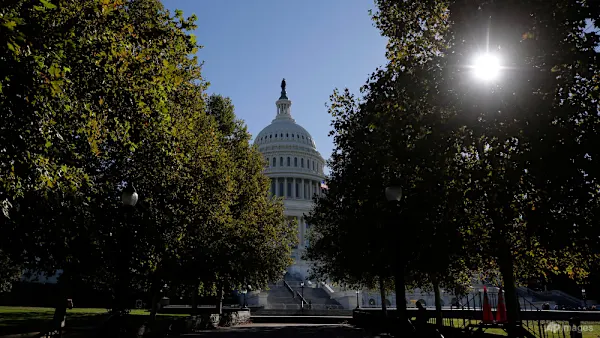Copyright The New York Times

Until recently, Kyle Kunkler was the top lobbyist for America’s soybean industry. In that job he once boasted of helping to keep a controversial weedkiller called dicamba in use, likening his back-and-forth with regulators to a tennis match full of “rocketing volleys.” Now, he is that regulator. In June, Mr. Kunkler was named the Trump administration’s top official in charge of pesticide policy at the Environmental Protection Agency. Less than a month later, the E.P.A. proposed allowing the use of herbicides containing dicamba, a chemical whose use has twice been restricted by a federal court. Critics of the proposal say it closely aligns with the soybean industry’s priorities. As the deputy assistant administrator for pesticides, Mr. Kunkler will lead the effort to finalize those plans. He is one of four former industry lobbyists or executives overseeing the E.P.A. office that regulates chemicals including pesticides. “It’s incredible, the entire leadership of that office comes directly from industry,” said Lori Ann Burd, a senior attorney at the Center for Biological Diversity, which previously took the E.P.A. to court over dicamba. Brigit Hirsch, a spokeswoman for the E.P.A., said the agency’s proposal was developed by career staff over several months and that Mr. Kunkler, who joined just weeks before the proposal was released, had no influence. “Like all political appointees, Mr. Kunkler consulted with agency career ethics officials to resolve any potential conflicts of interest,” she said. Mr. Kunkler’s critics say his E.P.A. appointment and others run counter to promises made by the Trump administration to limit corporate influence on federal agencies as part of its “Make America Healthy Again” agenda. Robert F. Kennedy, the secretary of health and human services, has been a vocal critic of pesticides and other toxic chemicals. In recent months, the E.P.A. has said it would speed up the approvals of new chemicals, particularly for use in data centers and related industries. It has proposed industry-friendly changes for assessing the risk of chemicals including asbestos and lead. And it has said it would accelerate approvals of pesticides to support American agriculture. James V. Aidala, who headed E.P.A.’s chemical-safety office under President Bill Clinton, said Mr. Kunkler could bring a much-needed agricultural industry perspective. “Coming from a farm group, he’ll have more familiarity with the issues, and that’s good, said Mr. Aidala, now a consultant at the law firm Bergeson & Campbell. “But he’s also going to have more sympathy” for the industry, he said. At the start of the Trump administration, there had been few signs that the E.P.A. would move quickly on dicamba. On March 3, staffers said any attempt to reapprove dicamba was “a complex decision that will take time to evaluate,” according to a presentation that was released in response to a public-records request. The following week, on March 11, Mr. Kunkler asked the E.P.A. for a meeting to discuss dicamba. “This is a relatively time-sensitive discussion,” he wrote Ms. Beck. “If there is the opportunity to get that meeting on the calendar this week, that would be immensely appreciated.” Ms. Beck replied, according to emails, and a meeting took place that week. Since then, the E.P.A. has moved decisively on dicamba, assembling a new risk assessment that critics say leaves out important information, including details on protections for endangered species. In June came the announcement that Mr. Kunkler had joined the agency to oversee pesticide policy. By mid-July, the E.P.A. had proposed to re-approve dicamba, saying that with the proper precautions, the chemical’s benefits outweighed its risks. The E.P.A.’s proposal aligns closely with recommendations from Mr. Kunkler’s former employer, the American Soybean Association, in some cases placing fewer restrictions on dicamba’s use than what pesticide companies had sought, critics say. The E.P.A. proposal would remove strict restrictions on when dicamba can be applied, for example, and removes a requirement for buffer zones around fields where dicamba couldn’t be used. “What they’ve proposed is even worse than what Monsanto asked them to approve,” said George Kimbrell, legal director of the Center for Food Safety, which also previously sued the E.P.A. over dicamba, representing environmental groups and a farmworkers’ organization. Monsanto sold dicamba products from 2016 until 2018 when the company was acquired by Bayer. Brian Leake, a Bayer spokesman, said in a statement it welcomed the E.P.A. proposal and that the company was confident dicamba herbicides “can be used safely and successfully.” The proposal introduces alternative restrictions on dicamba’s use, based on temperature, which is a more flexible arrangement for growers. The E.P.A. plan also doesn’t preclude states from adding restrictions. At least six states have limited the use of dicamba, including Illinois, Indiana and Minnesota. The agency is now studying public comments on its proposal before making a decision. Madelyn Derks, director of government affairs at the American Soybean Association, said dicamba remained “one of several important tools in the toolbox” for farmers. The E.P.A.’s proposed reauthorization of dicamba is the latest chapter in a yearslong saga. Weeds have become resistant to earlier herbicides, chiefly Roundup, whose active ingredient, glyphosate, is controversial for its possible links to cancer. Though dicamba is not thought to be toxic to humans, it can kill not only weeds, but also crops. Over the past decade, pesticide companies have begun selling soybean and cotton seeds that are genetically modified to withstand dicamba. That way, farmers can spray it on their fields without killing their own crops. But because dicamba can drift to nearby land, its manufacturers have faced thousands of lawsuits from farmers claiming their non-tolerant crops were damaged when dicamba floated across property lines. In 2020, a federal court vacated the E.P.A.’s registrations for three dicamba weedkillers, saying the agency had failed to properly acknowledge the chemical’s risks. In his opinion, Judge William A. Fletcher of the Ninth Circuit pointed to the “social costs to farming communities from pitting neighbor against neighbor.” Throughout those years, Mr. Kunkler was a prominent voice advocating for dicamba’s continued use. In 2020, he wrote about his efforts lobbying for dicamba, calling it “the legal and regulatory equivalent of a Wimbledon court.” He called ensuring access to herbicides and other tools “a matter of immediate priority.” Last year, a federal court for the second time blocked a move by the E.P.A. to re-approve dicamba. (The E.P.A. allowed farmers to use products already purchased for the 2024 season.) Environmental groups argue that American agriculture should reduce its dependence on dicamba and other herbicides by rotating crops or growing “cover crops” that aren’t for harvest, which can make it harder for a weed adapted to one crop to dominate. Mr. Kunkler is set to guide the rollout of the Trump administration’s rule on protecting endangered species from pesticides. The E.P.A. is also working on a review of glyphosate, the Roundup herbicide. Mr. Kunkler is expected to oversee that review. Jake Li, previously the assistant director for the endangered species program at the U.S. Fish and Wildlife Service and pesticides chief under the Biden administration, said dicamba represented an effort at the E.P.A. to work with farmers.



